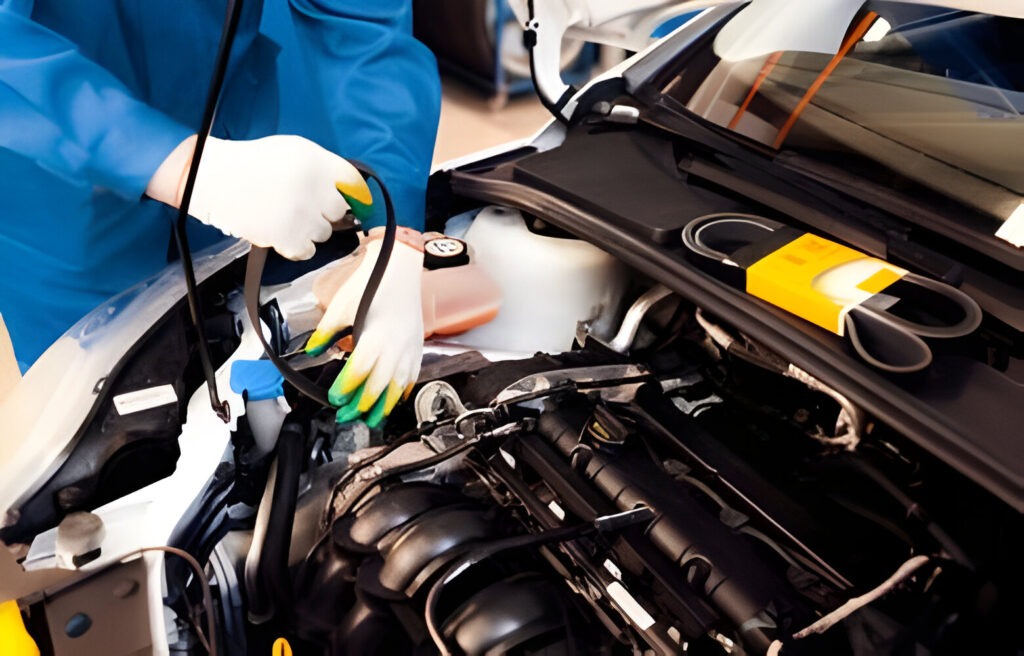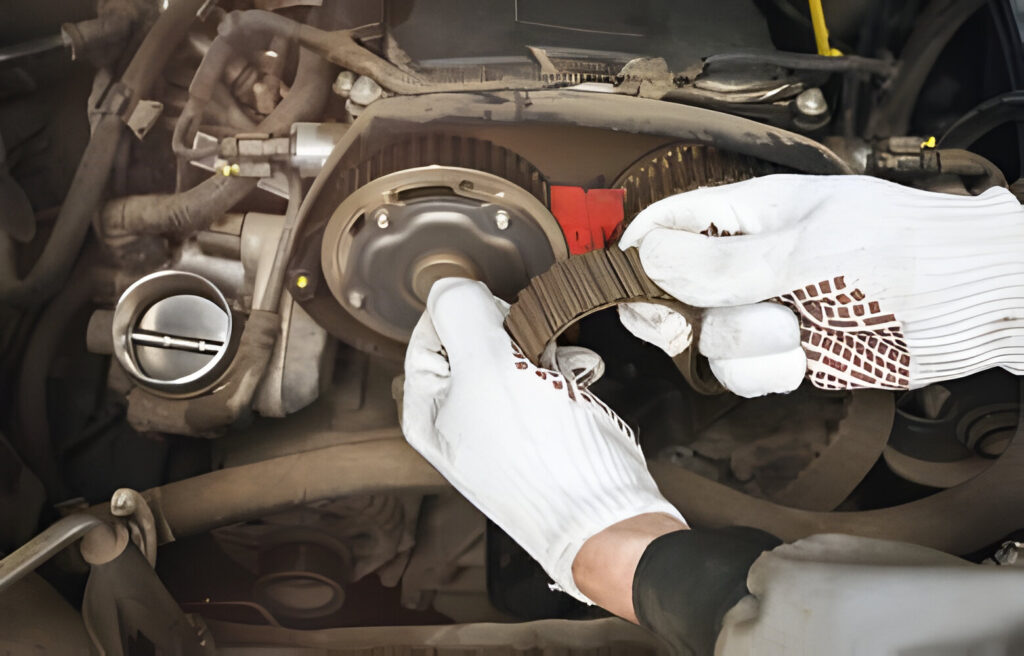Introduction
When it comes to your vehicle’s engine, the timing belt or timing chain plays a crucial role. It ensures that the engine’s valves open and close at the correct times, which is essential for optimal engine performance. However, many drivers are unsure about whether a timing belt or timing chain is better for their vehicle.
This blog will help you understand the differences between them. You will also get to understand their roles, and factors to consider when choosing the best option for your car.
Key Takeaways
- Timing belt is a flexible rubber band with teeth grips onto gears on the camshaft and crankshaft. It keeps them in sync.
- PU Timing belt is typically quieter but require more frequent replacement.
- Timing chains last longer but can be noisier and may require less frequent maintenance.
- Maintenance costs and schedules vary between timing belts and chains.
- Always refer to your vehicle manufacturer’s recommendation.
Understanding the Role of the Timing Belt or Timing Chain
The timing belt or timing chain synchronizes the rotation of the crankshaft and the camshaft(s). This synchronization is crucial for the proper operation of the engine’s valves and pistons. If the timing is off, the engine may run poorly or not at all.
PU timing belt manufacturers make timing belts made of rubber and are generally quieter during operation. They are also lighter and less expensive to manufacture.
On the other hand, timing chains are made of metal and are more durable. They typically last the lifetime of the engine but can be noisier.

Factors to Consider When Choosing (Which One is Better?
When deciding between a timing belt and a timing chain, consider the following factors:
A. Priority: Quiet Operation vs. Long Lifespan
If you prefer a quieter engine, timing belts India might be the better choice. Rubber belts produce less noise than metal chains.
However, if you value a longer lifespan and don’t mind some noise, a timing chain is likely the better option. Timing chains can last much longer than belts and are less likely to need replacement.
B. Maintenance Costs (Scheduled Replacement vs. Potential Future Replacement)
Timing belts require regular replacement, typically between 60,000 and 100,000 miles, depending on the vehicle. This scheduled maintenance can be costly and inconvenient.
While, timing chains do not need regular replacement but can be more expensive to repair if they do fail. Consider the long-term maintenance costs when making your decision.
C. Manufacturer’s Recommendation for Your Specific Vehicle
Your vehicle’s manufacturer will recommend either a timing belt (most preferred) or a timing chain based on the engine design.
It is important to follow these recommendations, as they are based on the optimal performance and longevity of your engine. Always consult timing belt dealers in Mumbai or a trusted mechanic for advice.
Why Should I Replace My Timing Belt Even if My Engine Is Running Smoothly?
Even if your engine is running smoothly, replacing the timing belt at the recommended intervals is crucial. Timing belt manufacturer in India make timing belts of rubber, which can deteriorate over time due to heat, friction, and wear.
This deterioration isn’t always visible and can happen without warning. If a PU timing belt breaks while the engine is running, it can cause severe damage like bent valves, damaged pistons, or complete engine failure.
These repairs can be extremely costly and time-consuming. Replacing the timing belt at the recommended times is essential to prevent these problems.
Regular replacement ensures that your engine continues to operate smoothly and efficiently. It reduces the risk of unexpected breakdowns and expensive repairs.
By adhering to the recommended maintenance schedule, you can extend the life of your engine. This helps maintain the performance and reliability of your vehicle.
How Can You Determine Which Type Your Car Has?
To determine whether your car has a timing belt or timing chain, start by checking your vehicle’s owner’s manual.
The manual will tell you which part your engine uses and the recommended maintenance schedule. It is crucial to know if your engine uses a timing belt or timing chain to understand its maintenance needs and schedule.
If you do not have access to the manual, you can consult a professional mechanic who can quickly identify the type of timing component in your engine.
You can also check online resources or forums for your vehicle’s make and model, where this information is often easy to find. Many automotive websites provide detailed specifications for various vehicles.
Car enthusiast communities also offer this information, including whether they use a timing belt or timing chain. By determining which type your car has, you can better plan for maintenance and avoid potential engine issues.
Conclusion
When choosing between a timing belt and a timing chain, it depends on your preferences and your vehicle’s needs. Timing belts are quieter but need regular maintenance. It lasts longer and require less frequent maintenance.
At Jigna Sales, we pride ourselves on being the leading timing belt manufacturer in India. Our products are made to last and work well, keeping your engine running smoothly.
Our commitment to excellence drives us to continuously innovate and improve our timing belt manufacturing process.
We invest in state-of-the-art technology and quality control measures. This is to ensure that each timing belt meets the highest standards of durability and performance.
Our skilled engineers and technicians carefully design and test each product to ensure it works well and is dependable.
Also, our dedication to customer satisfaction sets us apart. We prioritize providing exceptional service and assisting you in finding the perfect timing belt for your vehicle.
When you choose Jigna Sales, you can trust that you are getting not only a high-quality product but also support and expertise.
Experience the difference with Jigna Sales – your trusted partner for superior timing belts and outstanding customer service. Discover the perfect solution for your engine needs today.
Related Article: Timing Belt- Definition and Functions Diagram Working
Related Article: WHAT IS A TIMING BELT AND WHAT IS IT USED FOR?
Related Article: Timing Belts: Their Design, Types, Applications, and Benefits



